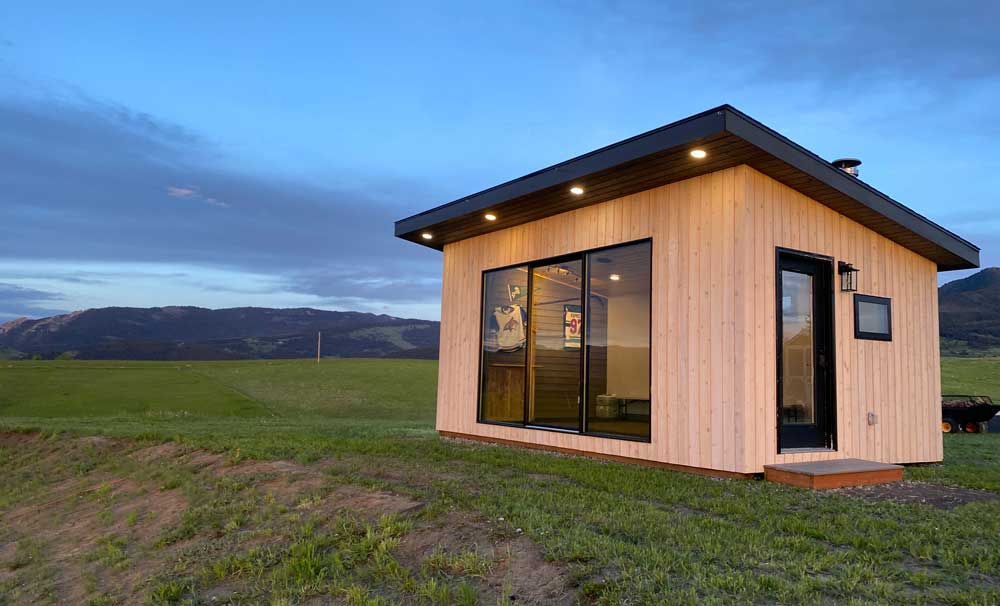Wednesday, November 20, 2024
Step-by-Step Lean-To Shed Build: How to Make a Reliable Shed

Step-by-Step Lean-To Shed Build: How to Make a Reliable Shed
Constructing a lean-to shed offers a practical and cost-effective solution for expanding storage or creating sheltered workspace. This guide provides a comprehensive, step-by-step approach to building a reliable and durable lean-to shed, emphasizing key considerations for material selection, structural integrity, and long-term performance.
Phase 1: Planning and Preparation
The foundation of any successful building project lies in meticulous planning. Before initiating construction, several critical steps must be undertaken to ensure a smooth and efficient process.
1.1 Site Selection and Assessment
Careful selection of the shed's location is paramount. Consider factors such as proximity to existing structures, access for delivery of materials, adequate sunlight (if needed), and drainage. Assess the ground's stability and levelness. Uneven ground requires leveling before foundation construction. Check local building codes and regulations regarding setbacks, height restrictions, and permit requirements.
1.2 Design and Dimensioning
Determine the desired dimensions of your lean-to shed based on your storage needs and available space. Sketch a detailed plan, including the dimensions of the base, walls, roof, and door. Consider the materials you will use and their dimensions when creating your design. A simple lean-to design is typically rectangular, with one side attached to an existing structure.
1.3 Material Selection
Selecting appropriate materials is crucial for the shed's durability and longevity. Consider the following:
- Foundation: Concrete slabs, gravel bases, or pressure-treated lumber are common choices. The choice depends on the soil conditions and the shed's weight.
- Framing: Pressure-treated lumber is recommended for its resistance to rot and decay. Choose dimension lumber appropriate for the shed's size and anticipated load.
- Sheathing: Plywood or OSB (oriented strand board) provides a strong and stable base for the roofing and siding.
- Roofing: Asphalt shingles, metal roofing, or polycarbonate sheets are suitable options. Consider the climate and your budget when making your selection.
- Siding: Various materials are available, including wood, vinyl, and metal. Choose a material that matches the aesthetic of your existing structures and offers adequate protection from the elements.
- Hardware: Use galvanized or stainless steel screws, nails, and other fasteners to resist corrosion.
1.4 Acquiring Necessary Tools and Equipment
Gather all necessary tools and equipment before beginning construction. This might include:
- Measuring tape
- Level
- Shovel
- Post-hole digger (if needed)
- Circular saw
- Drill with various drill bits
- Hammer
- Safety glasses
- Work gloves
- Safety boots
Phase 2: Foundation and Framing
With planning complete, the construction phase begins. A solid foundation ensures the shed's stability and longevity.
2.1 Foundation Construction
Prepare the ground by leveling the area and removing any vegetation. For a concrete slab foundation, pour a level concrete slab of appropriate thickness, ensuring proper curing time before proceeding. Alternatively, a gravel base provides a simpler, more cost-effective option, providing drainage and a level surface. For a less permanent option, pressure-treated lumber can be used to create a raised foundation.
2.2 Framing the Base
Construct the base frame using pressure-treated lumber. This frame will support the walls and roof. Ensure squareness and accurate measurements throughout this process. Use appropriate fasteners to securely join the lumber.
2.3 Wall Framing
Erect the wall frames, ensuring they are plumb and properly aligned with the base frame. Use appropriate bracing to maintain structural integrity during construction. For a lean-to, one wall will be attached to the existing structure. Ensure proper fastening to the host structure.
2.4 Roof Framing
The roof framing involves constructing rafters that slope from the higher point of the existing structure to the lower edge of the lean-to. Calculate the rafter lengths and angles accurately to ensure proper roof pitch and drainage. Securely attach the rafters to both the existing structure and the lean-to frame.
Phase 3: Sheathing, Roofing, and Siding
Once the framing is complete, the shed's exterior is enclosed and weatherproofed.
3.1 Sheathing the Walls and Roof
Attach plywood or OSB sheathing to the wall and roof frames, ensuring proper alignment and fastening. This provides a solid surface for the roofing and siding materials.
3.2 Roofing Installation
Install the chosen roofing material according to the manufacturer's instructions. Ensure proper overlapping and sealing to prevent leaks. Pay close attention to flashing around the edges and any penetrations (e.g., vents).
3.3 Siding Installation
Install the siding material, ensuring proper overlapping and sealing to protect the shed from the elements. Maintain a consistent gap for ventilation. Consider adding trim pieces for a finished look.
Phase 4: Finishing Touches and Inspections
The final phase involves completing the door, windows (if applicable), and conducting a thorough inspection.
4.1 Door Installation
Install the shed door, ensuring proper alignment and secure fastening. Consider adding weatherstripping for added protection from drafts.
4.2 Final Inspections
Conduct a thorough inspection of the entire structure, checking for any loose fasteners, gaps, or other issues. Address any imperfections before considering the shed complete.
4.3 Finishing Considerations
Consider adding features such as painting, staining, or sealing the exterior to enhance the aesthetic appeal and protect the materials. You might also want to install shelving or other interior features based on your storage requirements.
Building a lean-to shed requires careful planning, attention to detail, and a commitment to safety. By following these steps, you can construct a reliable and durable shed that will serve its purpose for years to come. Remember to always prioritize safety and consult with professionals if needed.
No comments:
Post a Comment